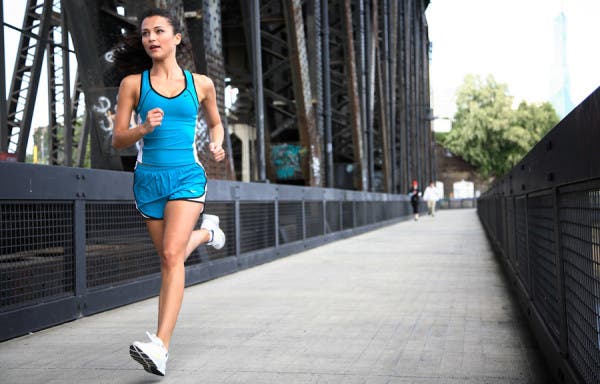Running is one of the most practiced activities in our country, thanks to our climate and it can be done wherever we are. Like all physical exercise, there is a harmful risk, which in running is quite related, in addition to intensity and volume, with the surface on which we train: which is the best?
Natural grass, the best option
Recent studies (1,2) have investigated the effects of different surfaces in terms of impacts and loads at the plantar level in amateur runners. The best stopping surface turned out to be natural grass, as it significantly reduced loads on both the forefoot and rearfoot. For this reason, it is the surface to be recommended, although it is necessary to make sure that it is in good condition as the grass can camouflage potholes or small irregularities.
Well-made artificial grass has the same characteristics.

Land and beach as alternatives
This article talks in depth about training on the beach, being the area of humid and compact sand a great option for continuous running, especially if there is not a great unevenness.
The earth, for its part, is a surface halfway between grass and harder surfaces such as asphalt. It is recommended that there are not many irregularities to run safely.
Synthetic tartan
In studies (1,2), similar characteristics were observed between tartan and hard surfaces such as asphalt and concrete. The elasticity it presents increases the contact time, so abusing the tartan in the long term can be harmful to the tendon system in non-professionals.
Asphalt and concrete
Both present a high hardness, being the surfaces to avoid as far as possible. Concrete, which forms sidewalks for example, would be the least recommended since asphalt has at least a certain degree of porosity.

It is important to note that this analysis is based on training without competitive objectives, since otherwise we must focus our training on the surface on which we are going to compete. For this we can, for example, combine different surfaces.
In the rest of the runners, grass is the most recommended surface because it reduces stress at the musculoskeletal level, which is directly related to the incidence of injuries. If we are used to another surface and we are going to change, it is best to make this change gradually.
And running barefoot?
In elite competitions, it is not uncommon to see barefoot runners, in fact there are numerous authors who recommend it since running shoes increase energy expenditure and oxygen consumption (3,4).
However, there are no prospective studies or clinical trials to evaluate its safety. Therefore, outside the professional field, there is no evidence to recommend this practice. In the case of the beach, the safety has been proven and you can train barefoot without problem, since in this way the ligamentous apparatus of the feet is strengthened.
Sources:
- Attenuation of foot pressure during running on four different surfaces: asphalt, concrete, rubber, and natural grass Tessutti V, Ribeiro AP, Trombini-Souza F, Sacco IC. J Sports Sci (epub ahead of print) 17-Aug, 2012
- Comparison of plantar loads during running on different overground surfaces: http://www.ncbi.nlm.nih.gov/pubmed/22458825
- Burkett LN, Kohrt M, Buchbinder R (1985). Effects of shoes and foot orthotics on VO2 and selected frontal plane kinematics. Medicine and Science in Sports and Exercise 17, 158-163
- Flaherty RF (1994). Running economy and kinematic differences among running with the foot shod, with the foot bare, and with the bare foot equated for weight. Microform Publications, International Institute for Sport and Human Performance, University of Oregon, Eugene, Oregon
